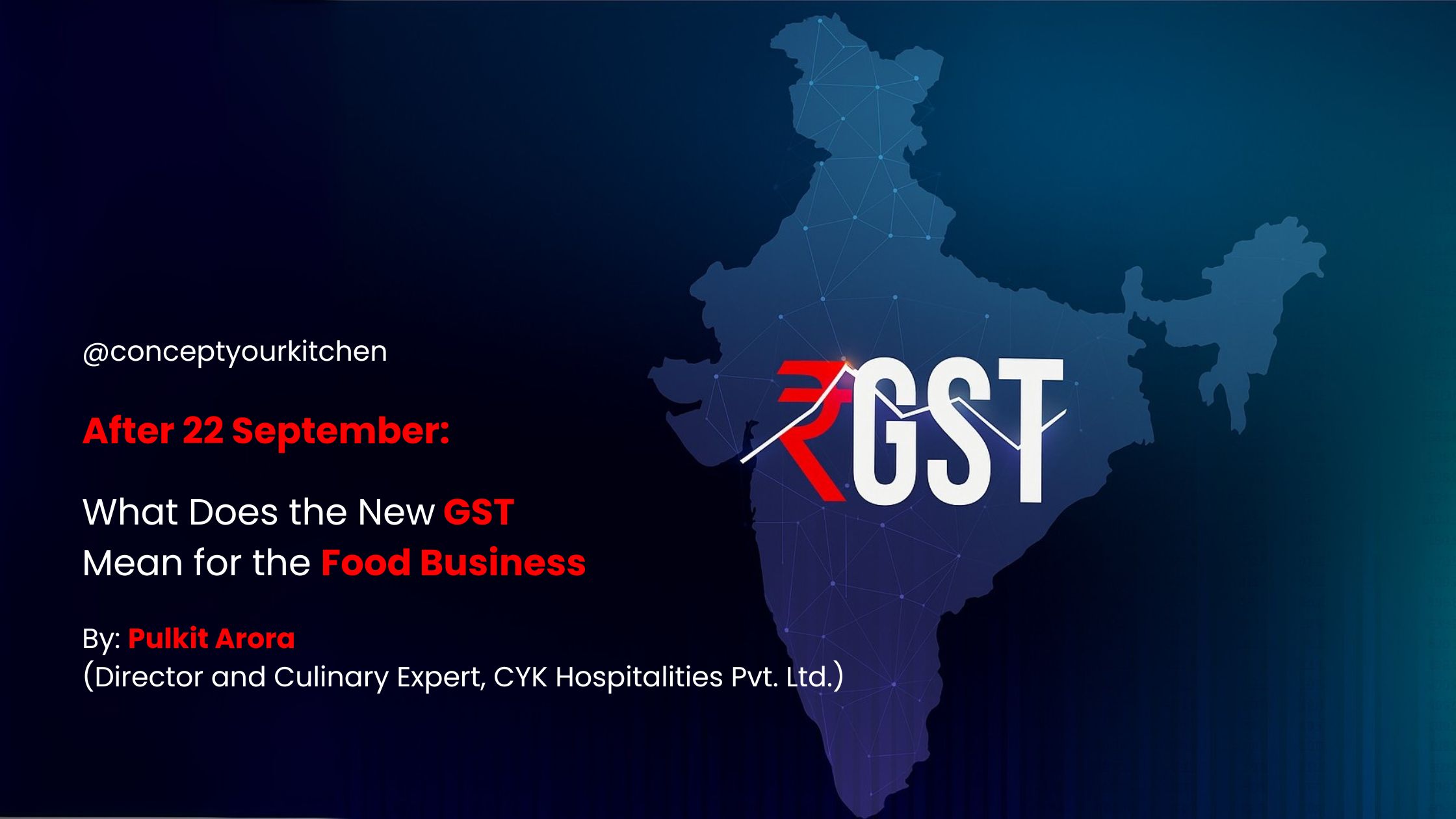
27 Sep After 22 September: What does the New GST Mean for the Food Business
Imagine walking into your favorite sweet shop after 22 September. The price of your rasgullas has dropped a little. The butter and ghee you pick up from the grocery store feel lighter on the wallet. Even the namkeen packet you grab for evening tea is cheaper than last month.
That’s the impact of India’s new GST policy, which comes into effect on 22 September 2025.
A Simpler Tax System
Until now, food businesses were juggling between 5%, 12%, 18%, and sometimes even 28% GST slabs. For many, this created confusion and ate into margins. From September onwards, most food items will fall under just two slabs, 5% and 18%, while some basics like rotis and breads will be completely tax-free.
The idea is simple: make life easier for both consumers and businesses.
What’s Cheaper for the Customer
Here’s where the change feels real:
Milk and dairy products like butter, cheese, paneer, and ghee are moving into the lower 5% slab or becoming tax-free.
Everyday breads, rotis, chapatis, parathas, will now carry no GST at all.
Packaged snacks, namkeen, biscuits, pasta, and even chocolates will be taxed less, meaning companies can either drop prices or pocket slightly better margins.
In short, the family grocery bill may actually shrink, and that evening snack might feel like less of an indulgence.
Where Costs May Go Up
But not everything is rosy. Ordering food online will become a touch more expensive. Platforms like Swiggy and Zomato will now charge 18% GST on delivery fees, which means that burgers and fries delivered to your doorstep may pinch your pocket slightly more.
Some beverages and “luxury” food products could also slip into the 40% bracket, keeping them firmly in the premium space.
What This Means for Businesses
For food entrepreneurs, the shift brings both relief and responsibility.
Restaurants and cafés can benefit from lower prices on their raw ingredients, especially packaged inputs like dairy and bread. But if delivery forms a big part of their business, they’ll need to rethink pricing or offer smarter combos to balance out higher delivery charges.
Packaged food brands—the namkeen makers, the biscuit companies, the local snack brands—stand to gain the most. With lower GST, they can slash prices, grab more customers, and still keep margins healthier than before.
Compliance and operations get simpler too. Fewer slabs mean fewer mistakes on invoices, faster billing, and less confusion for accountants.
The Bigger Picture
At the heart of it, this isn’t just about tax numbers. It’s about how India eats and how food businesses adapt. Cheaper essentials could push more people to spend on packaged and branded foods. Restaurants might attract more footfall if they play smart with pricing. And consumers, always sensitive to food prices, may reward businesses that pass on the benefits fairly.
About the Author
This article is written by Pulkit Arora, Director and Culinary Expert at CYK Hospitalities, a leading F&B consultancy firm in India. CYK Hospitalities specializes in restaurant consultancy, menu engineering, brand expansion, and more, helping businesses create authentic, innovative, and memorable dining experiences with extensive experience in the industry.



No Comments